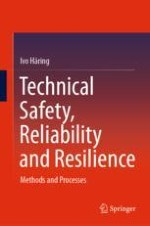2021 | OriginalPaper | Buchkapitel
13. Semi-Formal Modeling of Multi-technological Systems I: UML
verfasst von : Ivo Häring
Erschienen in: Technical Safety, Reliability and Resilience
Verlag: Springer Singapore
Aktivieren Sie unsere intelligente Suche, um passende Fachinhalte oder Patente zu finden.
Wählen Sie Textabschnitte aus um mit Künstlicher Intelligenz passenden Patente zu finden. powered by
Markieren Sie Textabschnitte, um KI-gestützt weitere passende Inhalte zu finden. powered by
